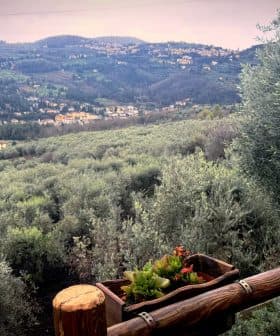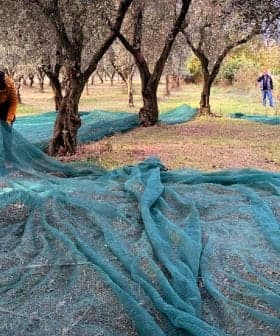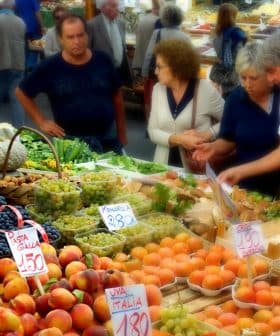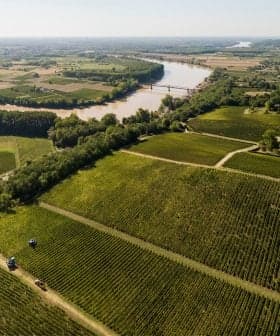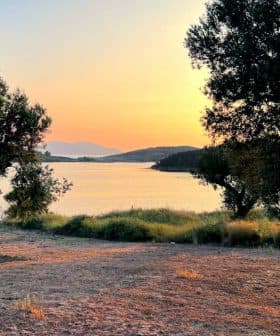5.5 Million Hectares of Traditional Olive Groves at Risk of Abandonment
A new report highlights the major transformation that the olive sector is undergoing, with modern groves set to replace many traditional ones.
A report by the Spanish Traditional Grove Association (Asolite) reveals that a significant number of traditional olive groves are neglected or abandoned, with 1.3 million hectares at-risk of abandonment in Spain and 5.5 million globally. The report highlights the ongoing shift from traditional groves to high-density and super-high-density groves, impacting biodiversity, genetic diversity, and the social and cultural connections between people and the land.
A considerable number of traditional olive groves are neglected by the owners or outright abandoned, according to the latest report by the Spanish Traditional Grove Association (Asolite).
Already, 1.3 million hectares of traditional groves are considered at-risk of abandonment in Spain. The figure rises to 5.5 million hectares globally and is expected to grow over time.
The main reason for the abandonment comes from the loss of income associated with the traditional orchard. As modern orchards expand, many traditional groves are replaced.
The report, to which Juan Vilar Strategic Consultants contributed, provides data and considerations about the characteristics of a decisive and ongoing change in the entire sector.
See Also:Rehabilitating Olive Trees in Aragón to Stem Spain’s Rural ExodusTraditional groves are rapidly being replaced by high-density and super-high-density groves (known as intensive and super-intensive groves in Spain), which are more profitable due to substantially lower operating costs.
“The main reason for the abandonment comes from the loss of income associated with the traditional orchard,” Juan Vilar told Olive Oil Times. “As modern orchards expand, many traditional groves are replaced.”
“Still, many of them are located where mechanization is not feasible, such as in many hills or on the mountains,” he added. “Those increasingly will feel the competitive pressure coming from extra virgin olive oils produced by modern techniques.”
Globally, olive groves cover 11.5 million hectares, occupying more than one percent of cultivable land and making it the most widespread permanent single crop in the world. As a result, the authors wrote that olive groves’ impact on biodiversity and the environment cannot be underestimated.
Though the definition varies, traditional groves usually comprise between 70 and 120 trees per hectare, with a distance of 10 or 12 meters between the trees. About 84 percent of all traditional groves are not irrigated, the trees usually become productive five or 10 years after planting, and many are more than a century old.
“This means that whichever strategy one can conceive for keeping up with the traditional grove, it will be totally different from the scope and investments of the modern orchards,” Vilar said.
Super-high-density plants can hold up to 3,000 trees per hectare, planted in rows and wholly irrigated.
While traditional groves must be cared for by hand or at most with the help of simple electric tools, modern groves are entirely mechanized so that workforce, work hours and overall costs are dramatically reduced.
According to the report, global olive production is between 17 and 22 million tons, of which 86 percent are used for olive oil production. In the last 30 years, olive oil production has spiked 220 percent, rising from 1.46 million tons to the current 3.19 million.
In the last 15 years, 1.65 million hectares of new olive orchards have been planted, and the number of countries where olives are grown rose from 46 to 66. All of this generates more than €12.5 billion and directly employs more than 28.6 million people.
While around 70 percent of all olive groves in the world are traditional, five percent have been abandoned in the last few years. Meanwhile, 32 percent are located in areas considered “non-mechanizable.”
In the last few years, the amount of high-density and super-high-density groves have grown 7.4 percent.
Since traditional orchards today still account for 55 to 60 percent of the overall olive oil production, the ongoing changes dramatically impact the sector.
According to the report projections, some traditional groves that cannot be mechanized will be replaced by more profitable crops. This trend is likely to grow and could bring a natural balance within the sector while also contributing to a possible structural olive oil price recovery.
See Also:Intensive Olive Farms Contribute to Desertification in Spain, Experts WarnStill, in the olive-devoted Spanish region of Andalusia, 80 percent of the workforce in the olive sector work with traditional groves, which shows how significant an impact the current transformations are destined to have.
“Many small communities located in the hills or the mountains thrived with the traditional orchards,” Vilar said. “Not only did they provide food to the locals, but they have been a source of income and social and cultural activities.”
“They are responsible for a special connection between people and the land and kept local populations in lands that otherwise would have risked to be abandoned,” he added.
The report also highlighted the relevance of the genetic erosion of olive trees connected to the ongoing transformations. The phenomenon of reduced genetic diversity is associated with the limited number of cultivars that can be grown in high-density and super-high-density groves – Sikitita, Arbequina, Arbosana, Koroneiki, Oleana and Leziana.
On the other hand, traditional groves are planted with hundreds of different cultivars, some of which are endemic to specific regions. As a result, these groves demonstrate the crop’s genetic diversity and role in dozens of local cultures.
They are also the source of different kinds of extra virgin olive oil with their unique flavor and organoleptic characteristics.
“Modern groves produce a very high-quality extra virgin olive oil thanks to the mechanization which allows olives to be harvested without touching the ground and transformed immediately after harvesting,” Vilar said.
Still, the extra virgin olive oil from traditional production often boasts more polyphenols – powerful antioxidants largely associated with the many health benefits of extra virgin olive oil – and unique qualities strongly connected to the specific cultivars.
In several European countries, most traditional groves are located on small properties. Many extra virgin olive oils that are protected by the geographic indicators come from relatively small areas where specific cultivars grow.
The report hints at the need for a new role for traditional groves, which combat desertification in arid regions, effectively sequesters carbon dioxide and sustains biodiversity in its surroundings.
Furthermore, traditional groves require far fewer interventions with pesticides and fungicides. They also prevent erosion since no heavy machinery is used to harvest them and promote a rich social and cultural connection between the population and the territory.
Given the unique profile of the traditional orchard and its environmental role, the report authors wrote, its operations should be promoted and sustained by the governments.
“The incoming new national plan in Spain and the new European Common Agricultural Policy are both taking a step forward in this direction, recognizing the relevance of the traditional orchards and allocating funds and specific policies to favor the farmers,” Vilar said.
The report concluded that public funding should be accompanied by promoting the qualities of traditional extra virgin olive oils, by an increase in tree density per hectare in the areas where water might be available for irrigation and by promoting initiatives such as oleotourism.
Share this article


